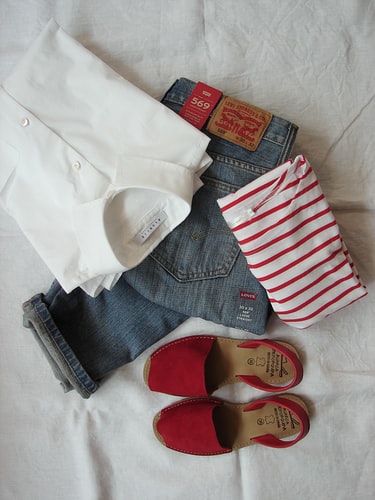With the advancement in technologies in recent years, the changes witnessed in the manufacturing industry were also really quick and advanced. Fashion production manufacturing has been no exception as it too has witnessed major changes in terms of how the industry works. The industry has to evolve from time to time to respond quickly to the needs and wants of the customers at the right time. Numerous trends were seen in the fashion manufacturing industry. Let’s witness some of them.
Future trends of garment manufacturing:
- The rise of machine learning: We are all aware of a machine’s ability to learn and adopt intelligent human behavior. Nowadays, these advanced algorithms in the machines are transforming the way the manufacturing industry collects information, predicts consumer behavior, and performs skilled labor.
Some machines even can predict trending patterns, themes, silhouettes, colors, and styles to provide customer sentiment around products and display images. These machines are almost taking the place of humans in terms of detecting when is the right time and what is the product for a particular customer. This garment manufacturing technology is doing exceptionally well.
- 3D Design, printing, and mass customization: Nowadays, many brands are exploring how 3D printing can help them produce goods on great demand and create new personal avenues for customization. This has become increasingly in-demand as now competitiveness lies more in delivering products that are tailored according to the customer’s tastes and needs in a timely and speedy manner.
Some of the latest 3D rendering technology, such as CLO, enable brands to tweak designs on the fly and see updates in real-time. This aids in the improvement of product quality by allowing designers to review fit and silhouette earlier in the production process, reducing waste and mistakes.
- Robot Designs for the Manufacturing Floor: Robots have always been considered ideal to perform tedious and repetitive tasks in the factories. Though the latest technologies have also equipped the robots with great memory and agility making them highly collaborative and programmable. It is a wise decision to let the robots do the tasks in dangerous situations. This will essentially keep humans safe and also the robots will do more smart work.
Sewbots” have been developed by several firms, such as Program Automation. These are robots with robotic arms and vacuum grippers that assist them in carefully directing a piece of fabric through a sewing machine. These robots can be used for a variety of tasks in the garment manufacturing industry.
- Digital Factories: Digital factories are also one of the great garment manufacturing technologies. Most of the leading garment manufacturing companies are now digitizing their production and supply chains. In the process of digitizing, they deploy the key technologies that include big data analytics, real-time planning, end-to-end, workers augmentation and autonomous systems. These digital technologies allow brands to produce highly-customized products.
In the future, the factories will be completely automated with self-servicing and self-repairing structures. This would require minimal human intervention. The completely automated smart factories will have a detailed snapshot of all production phases thanks to these real-time processing and data collection.
- Rapid Data Analysis For Quick Adaptation: It is all because of the Internet and new software brands that factories can now receive real-time feedback and alerts regarding any defects or damaged goods. This helps in saving money and eliminating any unnecessary waste. This also ensures the delivery of the products at the right time.
Nowadays, as cloud computing has grown, it lets the workers work in the company and factory from any part of the world at the same time. This helps in quick access to relevant data and facilitating clear communication. Now, manufacturers can even keep their financial and client information safely on one platform.
- Manufacturing CRM: Now, manufacturers are adopting new processes to manage customer relationships and improve product sales. Manufacturing CRM software allows manufacturers to easily organize customer data and efficiently close deals more quickly in one platform. It allows a manufacturer to get insights into a customer’s needs and wants.
- Supply-Chain Optimization: As people are nowadays becoming extremely impatient regarding the lead times and delivery. Therefore, many companies have taken a step further in “in-house” production to increase the speed and supply chain efficiency.
Things like materials sourcing, creative and technical design, samples, production and shipping are all done under the same roof. And for all these things to run smoothly, the teams have to ensure everyone has access to the same data regarding the products. This “in-house” production thinking is already being implemented by many brands like Gucci.
- Better working conditions: Lately, many global fashion brands have started to make agreements to work with suppliers, NGOs and governments to provide a fair amount of living wage and better working conditions to the workers. The fragmented production model has allowed various companies to do severe exploitation of workers. Therefore, some big companies have signed an open letter to the government to improve labour standards for the workers.
The use of new internet-based technologies can have the potential to gather relatable information. These internet-based technologies also help in connecting various individuals and groups. These technologies also help people be aware of the various laws that are made to protect workers. Thus, ensuring better working conditions for all the workers.
- Fashion on demand: Fashion on demand is one of the latest garment manufacturing technologies trends to watch. Consumer demands are moving to just-in-time output due to emerging innovations like data processing and automation. Many brands have switched to manufacturing the products only on demand. As a consequence, there is less overstock and less clothing that is thrown out. One can also witness that brands have started to take into consideration the importance of small-batch production as it helps in avoiding any over the top expenses and wastes. Fashion on demand has drastically changed the overview of the production process.

